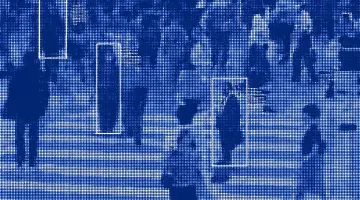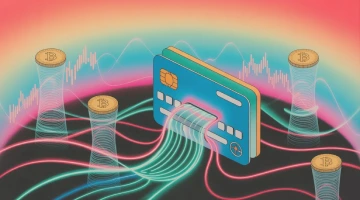Bitcoin Inscriptions | BRC-20 and Runes Protocol Development

What Are Bitcoin Inscriptions
Introduced in 2023, the Ordinals protocol revolutionized the creation of bitcoin-NFTs by enabling the attachment of information to individual satoshis. A satoshi is the smallest unit of the cryptocurrency Bitcoin (BTC). It's named after the pseudonymous creator of Bitcoin, Satoshi Nakamoto. Within the Bitcoin blockchain realm, Ordinals represent numbered satoshis adorned with inscriptions crafted through the Ordinals protocol.
This innovative approach has paved the way for the emergence of Ordinals as a novel method for creating NFTs, popular meme coins development, and other asset creation within the Bitcoin network. Inscriptions are just added metadata, while Ordinals show the outcome of incorporating this data.
Inscriptions emerge as pivotal storytellers within this transactional landscape, enriching each transfer with contextual depth and significance. While satoshis may appear devoid of inscription, they serve as the foundational canvas upon which additional data is meticulously added. Transactional notes, messages, or digital assets give these silent satoshis purpose and meaning. They capture the intentions of both senders and recipients within the limits of block space limitations.
But what practical applications do these inscriptions offer? They're useful in so many ways. They add context to transactions, like payment references, invoice numbers, or personalized messages. Moreover, they also help users transfer digital assets or documents, which are stored as non-fungible tokens (NFTs) on the blockchain. And they let users create BRC-20 tokens, which are the standard for fungible tokens on the Bitcoin network.
What Is BRC-20 Standard for Token Development?
The BRC-20 standard stands as a pivotal milestone in the realm of tokenization, offering a streamlined approach to the creation and exchange of interchangeable tokens within the Bitcoin ecosystem. Introduced in March 2023 by a blockchain analyst known by the pseudonym Domo, BRC-20 tokens harness the power of Bitcoin's Ordinals protocol, capitalizing on its unparalleled convenience, immutability, and security.
In contrast to conventional token standards like ERC-20 on Ethereum, BRC-20 tokens streamline the complexities of smart contracts. Instead of relying on smart contracts, BRC-20 tokens use the simplicity of Ordinal inscriptions. These tokens are generated through the authoring of JSON files on individual satoshis, ushering in a novel era of tokenization on the Bitcoin blockchain.
Advantages of BRC-20 Token Development:
1. Streamlined Functionality: BRC-20 tokens offer a simplified approach to tokenization, bypassing the complexities of smart contracts and enabling easy creation and transfer of tokens for a wider audience.
2. Enhanced Security: Built on the robust foundation of the Bitcoin network, BRC-20 tokens benefit from its decentralized architecture and Proof of Work consensus mechanism, ensuring a high level of security.
3. Expanding Ecosystem: Despite being in its experimental phase, the BRC-20 standard is witnessing growing adoption, driven by the extensive user base of Bitcoin. This trend fuels further innovation and development within the ecosystem.
Disadvantages of BRC-20 Token Development:
1. Absence of Smart Contract Support: Unlike other common token standards, BRC-20 tokens do not incorporate smart contracts, potentially limiting their functionality and versatility in certain applications.
2. Reliance on Bitcoin Blockchain: BRC-20 tokens are tied to the Bitcoin blockchain, inheriting its limitations such as scalability issues and high transaction fees, which may impact their usability.
3. Compatibility Challenges: The BRC-20 standard's focus on the Bitcoin ecosystem may pose compatibility hurdles with alternative blockchain platforms and wallets, hindering seamless integration.
4. Narrow Use Cases: While suitable for tokenizing fungible assets, BRC-20 tokens may not be optimal for handling non-fungible assets or implementing complex token functionalities.
5. Higher Transaction Fees: The rush around BRC-20 tokens has led to a spike in transaction fees, as the network gets more and more congested.
While the BRC-20 standard presents a promising avenue for tokenization within the Bitcoin ecosystem, its adoption comes with a set of advantages and disadvantages to consider. As the landscape of blockchain technology continues to evolve, the success and sustainability of BRC-20 tokens will depend on ongoing innovation, adaptation, and refinement in response to emerging challenges and opportunities.
What Are Bitcoin Runes?
Following the triumphant launch of the Ordinals protocol, developer Casey Rodarmor unveiled the groundbreaking Runes token protocol, aimed at streamlining the creation of fungible tokens within the Bitcoin network. It was set to activate alongside the fourth Bitcoin halving, which occurred on April 19, ushering in a reduced issuance rate of new bitcoins. Within a mere few hours of its introduction, the Runes protocol garnered immense attention, with Bitcoin miners capitalizing on the rush to create runes, effectively dominating the blockchain space.
Runes were introduced at block number 840,000 and have spread quickly across the Bitcoin network. Unlike the BRC-20 standard, the Rune protocol is different because it binds to an unspent transaction output (UTXO) via a protocol message. This specifies the output, ID, and quantity using the OP_RETURN function.
Check out our thorough guide on What is Runes Protocol!
Runes have found a niche in NFT marketplaces that focus on rare satoshis and ordinal inscriptions. Okx and Magic Eden are two of the top platforms for rune listings. On Okx, a collection called RSIC•GENESIS•RUNE is leading the way, with a 24h trading volume of 24.6429 BTC or $1,627,801 on the moment of April 22, 2024.

Advantages of Token Development on the Runes Protocol:
1. Streamlined Token Creation: The Runes protocol simplifies the process of issuing native fungible tokens on the Bitcoin network, offering a user-friendly approach to tokenization.
2. On-Chain Efficiency: By adopting a UTXO-based model, Runes minimize the on-chain footprint, enhancing scalability and reducing congestion within the Bitcoin network.
3. Promotes Innovation: The protocol's simplicity has the potential to stimulate innovation within the Bitcoin ecosystem, empowering token developers to explore new use cases and applications.
4. Self-Contained Operation: Unlike some token protocols, Runes operate solely on-chain, eliminating the need for off-chain data and ensuring a streamlined and decentralized tokenization process.
5. Flexibility in Minting: Runes protocol allows open minting within parameters defined by the etcher, providing flexibility in token issuance and distribution.
6. Lower Transaction Fees: Runes protocol tackles this issue by reducing network congestion, ensuring smoother and more efficient transactions within the Bitcoin ecosystem.
Challenges of Token Development on the Runes Protocol:
1. Competition with Established Standards: Runes face competition from established token standards like ERC-20 and its predecessor BRC-20, which enjoy widespread acceptance within the cryptocurrency community, potentially hindering its adoption.
2. Risk of Token Burns: Errors in token operations may trigger token burns, negatively impacting the user experience and potentially causing loss of value.
3. Establishment as a Standard: Despite its promising features, the Runes protocol is yet to establish itself as a dominant and widely accepted token standard within the Bitcoin ecosystem, facing challenges in gaining traction and recognition.
Representing a new frontier in fungible token protocols for the Bitcoin network, runes aim to address the limitations of the BRC-20 standard. While BRC-20 relies on the Ordinals protocol, Runes strive to enhance efficiency in token development on Bitcoin. As elucidated in a recent protocol explainer by Rodarmor, while Ordinals are inscribed, Runes are etched, which means the etcher can "premine" a designated token allocation before the public mint. Despite their differences, both BRC-20 and Runes use Bitcoin and pay fees in Bitcoin for token creation.
BRC-20 Vs. Runes

Development Opportunities with BRC-20 and Runes Protocol
With BRC-20 and Runes protocols, a wide array of innovative decentralized applications and platforms can be developed to harness the potential of tokenization within the Bitcoin ecosystem. Here are some examples of what can be developed using these protocols:
Token Development
Token development services empower businesses to create a wide range of tokens tailored to their needs. Using the BRC-20 protocol, businesses can develop fungible tokens like payment, utility, and security tokens on the Bitcoin blockchain. With the Runes protocol, they can mint non-fungible tokens, such as gaining popular sports NFTs, gaming NFTs, music NFTs, and stablecoins, opening avenues for new monetization revenues and users’ engagement opportunities.
Token Marketplace Development
Token marketplaces serve as decentralized hubs where users can engage in the buying, selling, and exploring tokens created with the BRC-20 and Runes protocols. These marketplaces offer a wide array of tokens representing digital collectibles, real-world commodities, and other assets, providing users with opportunities to diversify their investment portfolios and participate in tokenized economies.
Token Launchpad Development
Leveraging the BRC-20 and Runes protocols, launchpad platforms facilitate token launches and fundraising events for new projects on the Bitcoin blockchain. These platforms offer comprehensive solutions for project teams to mint and distribute tokens to investors, conduct token sales, and manage fundraising campaigns, streamlining the process of launching tokenized projects.
Token Lending Platform Development
Decentralized lending platforms powered by the BRC-20 and Runes protocols are decentralized applications, which enable users to borrow and lend tokens on the Bitcoin blockchain. These platforms facilitate peer-to-peer lending and borrowing of tokens, using smart contract-based mechanisms for collateralization and loan repayment, providing users with access to decentralized financial services.
The Future of BRC-20 and Runes
As the Bitcoin network gains increasing attention and adoption, it's the perfect time to explore the potential of token creation on Bitcoin. These protocols offer a gateway to innovation within the Bitcoin ecosystem, providing developers and businesses with the tools to create groundbreaking solutions and tap into new opportunities. With the growing interest in decentralized finance, digital assets, and tokenization, BRC-20 and Runes standards stand poised to reshape the landscape of the Bitcoin network, opening doors to transformative advancements and pioneering developments.
Now more than ever, leveraging these standards can lead to the creation of innovative solutions that will drive the evolution of blockchain technology and help the Bitcoin network grow in new ways, providing stakeholders major benefits.
Rock'n'Block stands as your premier choice to harness the potential of token development on BRC-20 and Runes protocols. With over 15 years of experience in custom blockchain development and a track record of delivering over 300 blockchain solutions, we possess the expertise and knowledge to guide you through the intricacies of tokenization on the Bitcoin network. Our team of seasoned professionals is dedicated to understanding your unique requirements and crafting tailored solutions that align with your business objectives. From conceptualization to implementation, we offer end-to-end support to ensure the success of your token development endeavors. Partner with Rock'n'Block and unlock the full potential of tokenization on the Bitcoin blockchain!
We ❤️ Development
Follow us on social media to receive the hottest blockchain development updates
Twitter ⚡️Telegram⚡️LinkedIn⚡️Facebook













%201.webp)



